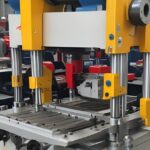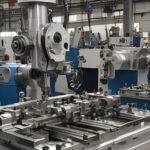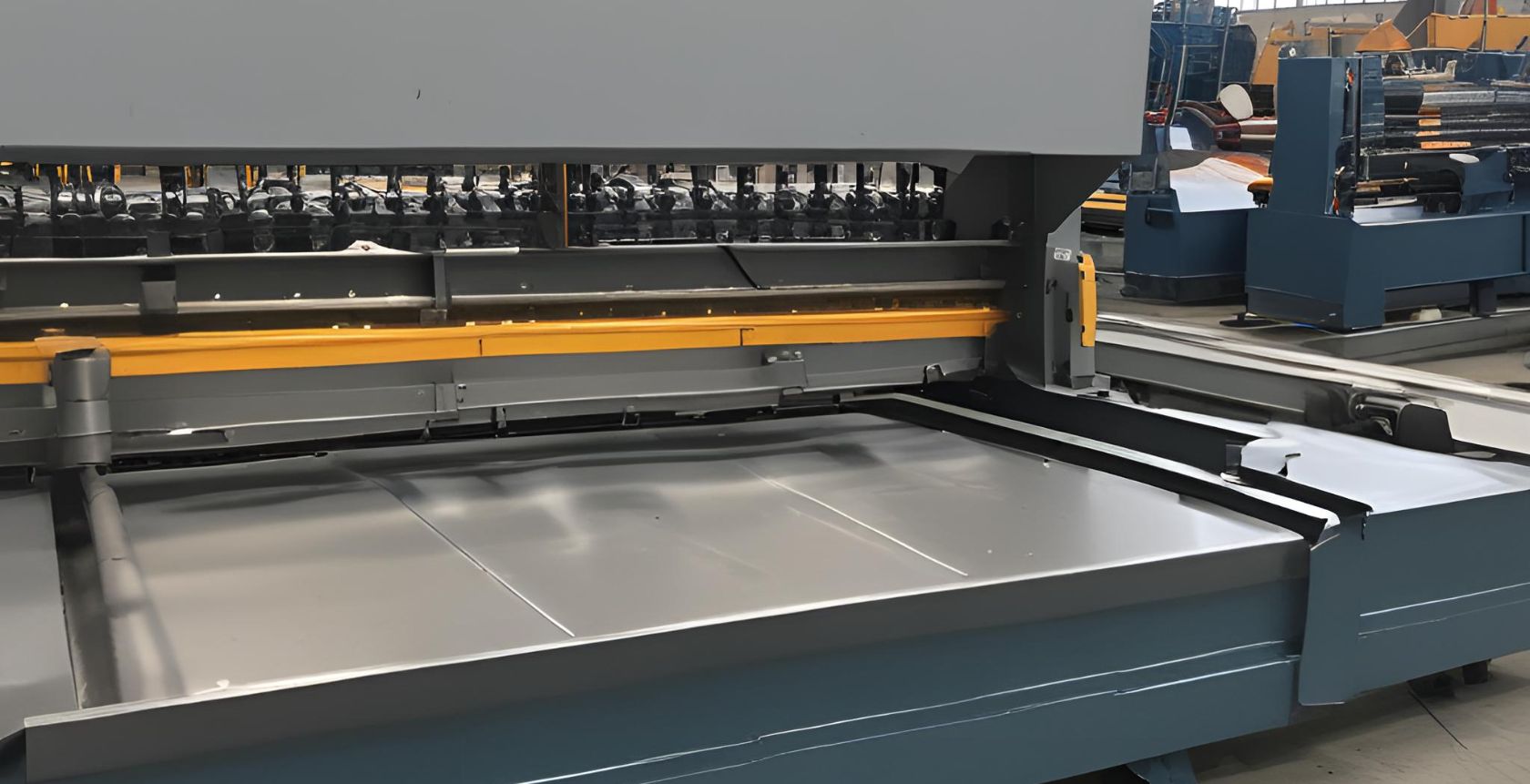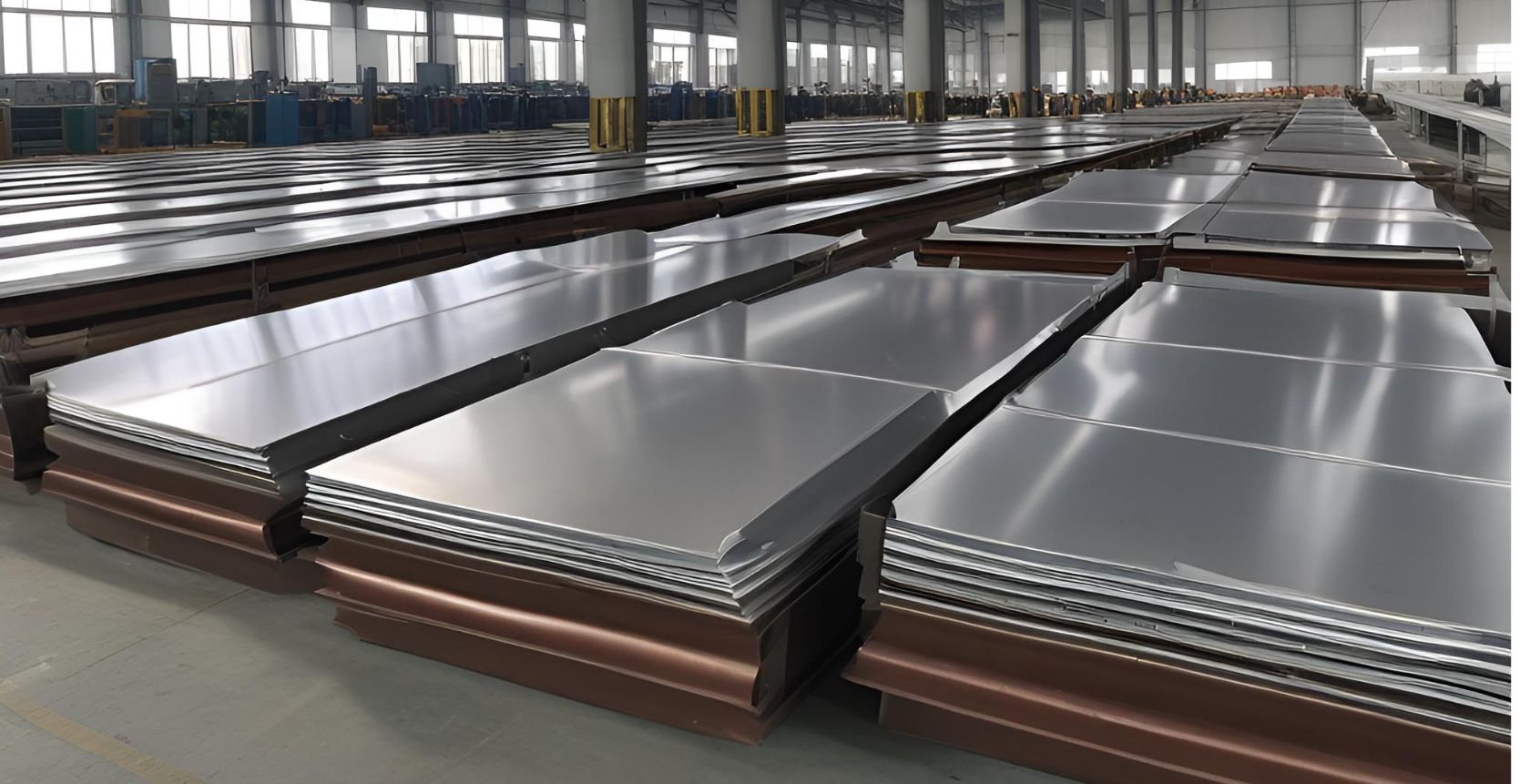
All You Need to Know About Stamping Aluminum
6 June 2024
Unleashing the Power of China Precision Machining Parts
13 June 2024Contact us now for exceptional metal fabrication and sheet metal services!
Guide to Metal Fabrication Sheet Metal
Welcome to the ultimate guide to metal fabrication! In this comprehensive article, we will be exploring the fascinating world of sheet metal and everything you need to know about it. Whether you're a DIY enthusiast or a professional metalworker, there's something here for everyone.
So, what exactly is metal fabrication? It's the process of cutting, shaping, and assembling various metal materials to create a finished product. Sheet metal, in particular, is widely used in a variety of industries due to its versatility and durability.
In this guide, we will delve into the different types of sheet metal, the tools and techniques used in fabrication, and the various applications of this incredible material. From automotive and aerospace industries to construction and manufacturing, sheet metal plays a vital role in countless sectors.
Join us as we go on a journey through the world of metal fabrication. Whether you're looking to learn the basics or want to enhance your existing knowledge, this guide will provide you with all the information you need to become a master in the art of sheet metal fabrication. Let's get started!
Different Types of Metal Fabrication Processes
Metal fabrication encompasses various processes, each serving a unique purpose in transforming raw materials into finished products. Some of the most common types of metal fabrication processes include cutting, bending, welding, and assembling. Cutting involves shearing or sawing metal sheets into desired shapes and sizes, while bending utilizes specialized equipment to create angles and curves. Welding, on the other hand, is crucial for joining metal components together, ensuring structural integrity. Assembling involves the final construction of the product by integrating individual pieces into a cohesive whole.
Metal fabrication processes are typically chosen based on the specific requirements of the project, such as the type of metal being used, the complexity of the design, and the desired end result. By understanding the different fabrication processes available, metalworkers can select the most suitable techniques to achieve their desired outcomes efficiently and effectively. Whether it's precision cutting for intricate designs or robust welding for structural strength, each process plays a crucial role in the overall fabrication process.
Metal fabrication processes continue to evolve with advancements in technology and machinery, allowing for greater precision, efficiency, and customization. From traditional techniques like forging and casting to modern methods such as laser cutting and 3D printing, metal fabrication has come a long way in meeting the demands of diverse industries. By staying informed about the latest developments in metal fabrication processes, metalworkers can enhance their skills and stay competitive in a rapidly evolving market. The continuous innovation in fabrication techniques opens up new possibilities for creating intricate designs, improving product quality, and streamlining production processes, ultimately benefiting both manufacturers and consumers alike.
Benefits of Sheet Metal Fabrication
Sheet metal fabrication offers a wide range of benefits that make it a popular choice for various applications across different industries. One of the key advantages of sheet metal is its versatility, allowing for the creation of complex shapes and structures with high precision. Sheet metal can be easily manipulated through cutting, bending, and forming processes, making it ideal for producing custom components tailored to specific requirements. Additionally, sheet metal is known for its durability and strength, providing excellent resistance to corrosion, heat, and impact, ensuring long-lasting performance in diverse environments.
Another significant benefit of sheet metal fabrication is its cost-effectiveness, as the material is readily available in various thicknesses and sizes, reducing the need for extensive machining or processing. The efficiency of sheet metal fabrication processes also contributes to cost savings, enabling manufacturers to produce components quickly and accurately. Moreover, sheet metal is recyclable, making it an environmentally friendly choice for sustainable manufacturing practices. By utilizing sheet metal in fabrication projects, companies can reduce waste and minimize their carbon footprint, aligning with global efforts towards eco-friendly production methods.
The lightweight nature of sheet metal further enhances its appeal, especially in industries where weight reduction is a critical factor, such as automotive and aerospace. Sheet metal components offer high strength-to-weight ratios, allowing for the design of lightweight yet robust structures that meet stringent performance requirements. This combination of strength, versatility, and cost-effectiveness makes sheet metal fabrication a preferred choice for a wide range of applications, from architectural panels and enclosures to machinery parts and consumer goods. The inherent benefits of sheet metal contribute to its widespread adoption and continued relevance in the ever-evolving world of metal fabrication.

Common Applications of Sheet Metal Fabrication
Sheet metal fabrication finds extensive use in a multitude of industries, owing to its versatility, durability, and adaptability to various applications. In the automotive sector, sheet metal components are integral to vehicle manufacturing, ranging from body panels and chassis parts to exhaust systems and engine components. The ability of sheet metal to withstand high temperatures and mechanical stresses makes it an ideal choice for automotive applications where performance and reliability are paramount. Additionally, the formability of sheet metal allows for the creation of intricate designs that enhance both aesthetics and functionality in automotive design.
The aerospace industry also heavily relies on sheet metal fabrication for producing aircraft structures, engine components, and interior fittings. Sheet metal's lightweight properties make it indispensable for aircraft design, enabling manufacturers to achieve optimal fuel efficiency without compromising on strength or safety. The precision and consistency offered by sheet metal fabrication processes are crucial in meeting the stringent quality standards and regulatory requirements of the aerospace sector. From fuselage panels to landing gear components, sheet metal plays a crucial role in ensuring the structural integrity and performance of modern aircraft.
In the construction and architectural industries, sheet metal is widely used for cladding, roofing, and structural elements in both residential and commercial buildings. The versatility of sheet metal allows architects and designers to create unique facades, canopies, and interior features that add aesthetic value and functionality to architectural projects. Sheet metal's weather resistance and low maintenance requirements make it an attractive choice for exterior applications, providing long-term durability and protection against the elements. Whether it's curtain walls, signage, or decorative elements, sheet metal fabrication offers endless possibilities for enhancing the visual appeal and structural integrity of architectural designs.
Beyond these industries, sheet metal fabrication extends its reach to sectors such as electronics, healthcare, and manufacturing, where precision, reliability, and efficiency are essential. From electronic enclosures and medical equipment to industrial machinery and consumer appliances, sheet metal components are integral to the functionality and performance of a wide range of products. The versatility and adaptability of sheet metal make it a versatile material that can meet diverse requirements across various industries, underscoring its importance in the global manufacturing landscape.
Tools and Equipment Used in Sheet Metal Fabrication
Sheet metal fabrication relies on a range of specialized tools and equipment to transform raw metal sheets into finished products with precision and efficiency. Some of the essential tools used in sheet metal fabrication include shears, press brakes, punches, and dies. Shears are used for cutting metal sheets into specific shapes and sizes, while press brakes enable precise bending and forming of sheet metal to achieve desired angles and curves. Punches and dies are utilized for creating holes, notches, and other intricate features in sheet metal components, allowing for customization and assembly.
Welding equipment is another critical component of sheet metal fabrication, as it is essential for joining metal pieces together to create strong and durable assemblies. Various welding techniques such as MIG, TIG, and spot welding are commonly used in sheet metal fabrication to ensure secure and reliable connections between components. Additionally, finishing tools like grinders, sanders, and polishers are employed to smoothen rough edges, remove burrs, and enhance the surface quality of sheet metal parts, ensuring a professional finish.
Advanced machinery such as laser cutters, CNC routers, and water jet cutters have revolutionized the sheet metal fabrication process by enabling high-precision cutting, drilling, and engraving operations. These automated tools offer increased speed, accuracy, and repeatability, reducing production time and minimizing material wastage. By leveraging cutting-edge technology and equipment, metal fabricators can achieve superior results and meet the demands of complex design specifications with ease. The continuous innovation in sheet metal fabrication tools and equipment underscores the industry's commitment to enhancing efficiency, quality, and performance across various applications and sectors.

Steps Involved in the Sheet Metal Fabrication Process
Sheet metal fabrication involves a series of steps that transform raw metal sheets into functional components or structures through cutting, bending, forming, welding, and finishing processes. The first step in the fabrication process is material selection, where the appropriate type and thickness of sheet metal are chosen based on the project requirements. Once the material is selected, the next step involves cutting the metal sheet into the desired shape and size using shears, laser cutters, or other cutting tools.
After cutting, the metal sheet undergoes bending and forming operations to create angles, curves, and contours as per the design specifications. Press brakes and rollers are commonly used for bending sheet metal to precise angles and shapes, ensuring dimensional accuracy and structural integrity. Welding is then employed to join individual metal components together, utilizing various welding techniques to achieve strong and durable connections. The welding process is critical for ensuring the stability and functionality of the final product, as secure welds are essential for structural integrity.
Once the metal components are assembled, finishing operations such as grinding, sanding, and painting are carried out to enhance the appearance and surface quality of the fabricated parts. Finishing touches not only improve the aesthetics of the product but also provide protection against corrosion, wear, and other environmental factors. The final step in the sheet metal fabrication process involves inspection and quality control checks to ensure that the fabricated components meet the specified tolerances, dimensions, and performance criteria. By following a systematic approach and adhering to best practices in each fabrication step, metalworkers can consistently produce high-quality sheet metal parts that meet customer expectations and industry standards.
Tips for Successful Sheet Metal Fabrication
Achieving successful sheet metal fabrication requires attention to detail, expertise in fabrication techniques, and adherence to best practices throughout the production process. To ensure optimal results and efficiency in fabrication projects, consider the following tips:
- Design for manufacturability: When designing sheet metal components, consider the manufacturability aspect by optimizing material usage, minimizing waste, and simplifying assembly processes. Designing with fabrication in mind can streamline production and reduce costs.
- Select the right material: Choose the appropriate type and thickness of sheet metal based on the application requirements, considering factors such as strength, durability, corrosion resistance, and formability. The right material selection is crucial for achieving the desired performance and longevity of fabricated parts.
- Precision is key: Pay close attention to tolerances, dimensions, and alignment during cutting, bending, and welding operations to ensure accurate and precise fabrication. Consistent quality and dimensional accuracy are essential for the functionality and fit of sheet metal components.
- Safety first: Prioritize safety measures in sheet metal fabrication by using appropriate personal protective equipment (PPE), following equipment guidelines, and implementing safe work practices. Protecting yourself and others from potential hazards is paramount in a fabrication environment.
- Continuous training and skill development: Stay updated on the latest fabrication techniques, technologies, and industry trends through training programs, workshops, and hands-on experience. Investing in skill development enhances proficiency and productivity in sheet metal fabrication projects.
By incorporating these tips into your sheet metal fabrication projects, you can improve efficiency, quality, and overall outcomes, leading to successful and rewarding fabrication experiences.
Challenges in Sheet Metal Fabrication and How to Overcome Them
Despite its many benefits, sheet metal fabrication presents several challenges that metalworkers may encounter during the production process. Some common challenges include material distortion, warping, and cracking during cutting and bending operations, which can affect the dimensional accuracy and quality of fabricated parts. To overcome these challenges, consider implementing the following strategies:
- Use proper tooling: Ensure that you are using the correct tools, dies, and fixtures for cutting, bending, and forming operations to minimize material distortion and achieve precise results. Investing in high-quality tooling can improve efficiency and reduce errors in fabrication.
- Control heat input: Maintain proper control over heat input during welding and forming processes to prevent material warping and distortion. Adjust welding parameters, preheating techniques, and cooling methods to minimize thermal stress and deformation in sheet metal components.
- Manage material thickness: Be mindful of material thickness variations and limitations when designing and fabricating sheet metal parts. Adjust bending radii, tool clearances, and forming sequences to accommodate different material thicknesses and prevent cracking or wrinkling.
- Optimize welding techniques: Select appropriate welding methods, filler materials, and joint designs to ensure strong and reliable welds without introducing defects or weaknesses. Proper welding procedures and inspection practices are essential for achieving high-quality welded joints in sheet metal fabrication.
- Perform thorough quality checks: Implement rigorous quality control measures throughout the fabrication process to detect and rectify any defects or inconsistencies in fabricated parts. Conduct dimensional inspections, visual examinations, and non-destructive testing to verify the integrity and performance of sheet metal components.
By addressing these challenges proactively and implementing effective solutions, metalworkers can enhance the quality, accuracy, and efficiency of sheet metal fabrication processes, leading to successful outcomes and customer satisfaction.
The Future of Sheet Metal Fabrication
As technology continues to advance and industries evolve, the future of sheet metal fabrication holds exciting possibilities for innovation, efficiency, and sustainability. The integration of digital technologies such as artificial intelligence (AI), robotics, and automation is revolutionizing the sheet metal fabrication industry, enabling faster production, higher precision, and increased customization capabilities. AI-powered design software and predictive analytics are streamlining the design process, optimizing material usage, and enhancing collaboration between designers and fabricators.
Robotics and automation are reshaping the manufacturing landscape by automating repetitive tasks, improving productivity, and reducing labor costs in sheet metal fabrication. Robotic arms, automated welding systems, and CNC machines are enhancing the speed and accuracy of fabrication processes, leading to higher throughput and quality in production. The adoption of Industry 4.0 principles, including interconnected systems, cloud computing, and real-time monitoring, is transforming traditional sheet metal fabrication into a smart and efficient manufacturing ecosystem.
Sustainability is another key focus in the future of sheet metal fabrication, with an increasing emphasis on eco-friendly materials, energy-efficient processes, and waste reduction strategies. The shift towards green practices, such as recycling scrap metal, optimizing energy consumption, and reducing emissions, is driving the industry towards a more environmentally conscious approach to fabrication. By embracing sustainable practices and circular economy principles, sheet metal fabricators can minimize their environmental impact and contribute to a more sustainable future for the industry.
In conclusion, the future of sheet metal fabrication is marked by technological advancements, automation, sustainability, and innovation, paving the way for a more efficient, agile, and environmentally friendly industry. By embracing new technologies, enhancing skills and capabilities, and prioritizing sustainability, sheet metal fabricators can position themselves for success in a rapidly changing manufacturing landscape. The evolution of sheet metal fabrication continues to open up new opportunities for growth, creativity, and excellence in meeting the demands of diverse industries and applications.
The Future of Sheet Metal Conclusion: Importance of Sheet Metal Fabrication in Various Industries
In conclusion, sheet metal fabrication plays a crucial role in various industries by providing versatile, durable, and cost-effective solutions for a wide range of applications. From automotive and aerospace to construction and manufacturing, sheet metal components are integral to the functionality, performance, and aesthetics of countless products and structures. The benefits of sheet metal fabrication, including its strength, formability, and recyclability, make it a preferred choice for industries where precision, reliability, and efficiency are paramount.
By understanding the different types of metal fabrication processes, the tools and equipment used, and the challenges and opportunities in sheet metal fabrication, metalworkers can enhance their skills, improve their processes, and stay ahead in a competitive market. The future of sheet metal fabrication holds promise for technological innovation, automation, and sustainability, driving the industry towards greater efficiency and eco-friendliness.
As we navigate through the world of metal fabrication, it becomes evident that sheet metal is not just a material but a cornerstone of modern manufacturing, construction, and design. Its versatility, strength, and adaptability continue to shape the landscape of various industries, offering endless possibilities for creativity, functionality, and sustainability. Whether you're a seasoned professional or an aspiring enthusiast, the world of sheet metal fabrication invites you to explore, innovate, and create with metal as your canvas.




